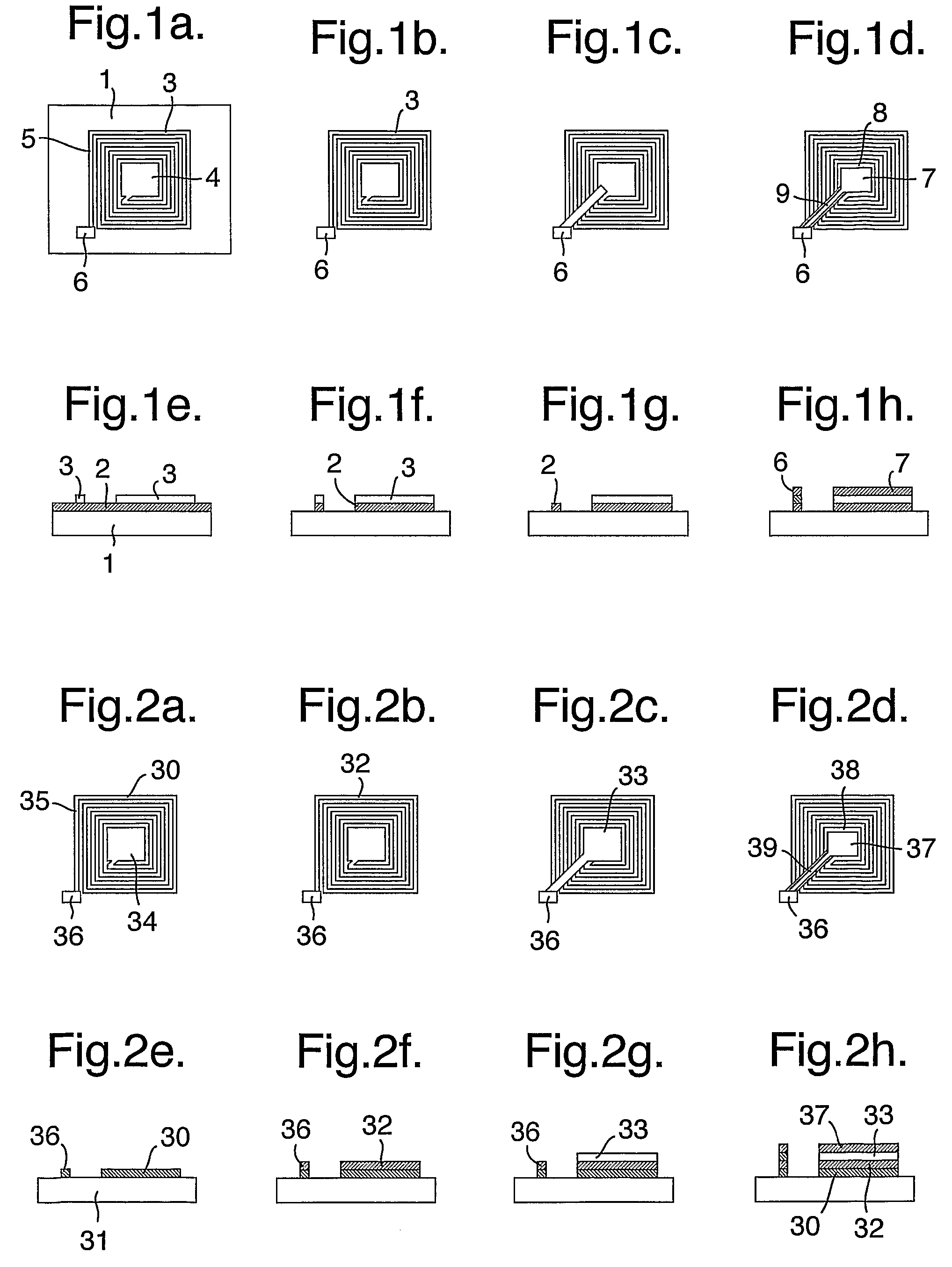RF tags
a technology of rf tags and substrates, applied in wave amplification devices, electrical appliances, instruments, etc., can solve the problems of requiring a costly further processing step, requiring a costly further production step, and requiring a large amount of metal on the surface of the substrate, so as to increase the number of substrate materials, reduce the cost of further processing and production, and reduce the cost of further production.
- Summary
- Abstract
- Description
- Claims
- Application Information
AI Technical Summary
Benefits of technology
Problems solved by technology
Method used
Image
Examples
example 1
[0078]A screen printing ink (supplied under the trade mark Acheson 6018S) was used as the ink formulation, to which was added titanium dioxide 2 μm at 30% by weight as a filler and silver nitrate 3% by weight. The silver nitrate was pre-dissolved in an aliquot of ethyl lactate / water to aid the transfer and mixing with the screen printing ink. The ink composition was screen printed onto one side of a sheet of polyester in the design of a “checkpoint®” system electronic article surveillance, (EAS), 1-bit tag.
[0079]The ink was cured by heating the sample to 80° C. for 10 minutes, causing the ink composition to solidify and adhere to the substrate. At this stage the ink had no electrical conductivity. The printed pattern of cured ink was then immersed into a solution of commercially available Enthone 2130® electroless copper at 46° C. and copper metal deposited to a thickness in the range of from 0.1 to 2 microns onto the printed pattern. An effective EAS tag requires greater than 2 mic...
examples 2-4
[0082]In the examples a compound of tin SnCl2.2H2O was dissolved into ethyl lactate to form an ink formulation of concentration in the range 1-100 millimolar (preferably 2-20 millimolar). Three varieties of this ink formulation were prepared. Example 2 used an inkjet formulation simply using the above prepared solution. Example 3 used an inkjet formulation that additionally comprised an additional 1% by weight ethyl cellulose binder. Both of these inks were printed onto a polyester substrate in the pattern of a first conducting layer of an RF circuit, as shown FIG. 2.
[0083]Example 4 used an ink which was prepared by adding the ink formulation to a commercial screen printing ink (the TiO2 based formulation 6018S from Acheson). Additions in the range 1-100 ml of the ink formulation (preferably 10-30 ml) were added to 100 grams of the screen printing paste and mixed in. This screen printing ink formulation was printed onto a polyester substrate and dried at 60° C. for 1 hour.
[0084]In e...
PUM
| Property | Measurement | Unit |
|---|---|---|
| thickness | aaaaa | aaaaa |
| thickness | aaaaa | aaaaa |
| thickness | aaaaa | aaaaa |
Abstract
Description
Claims
Application Information
 Login to View More
Login to View More - R&D
- Intellectual Property
- Life Sciences
- Materials
- Tech Scout
- Unparalleled Data Quality
- Higher Quality Content
- 60% Fewer Hallucinations
Browse by: Latest US Patents, China's latest patents, Technical Efficacy Thesaurus, Application Domain, Technology Topic, Popular Technical Reports.
© 2025 PatSnap. All rights reserved.Legal|Privacy policy|Modern Slavery Act Transparency Statement|Sitemap|About US| Contact US: help@patsnap.com


